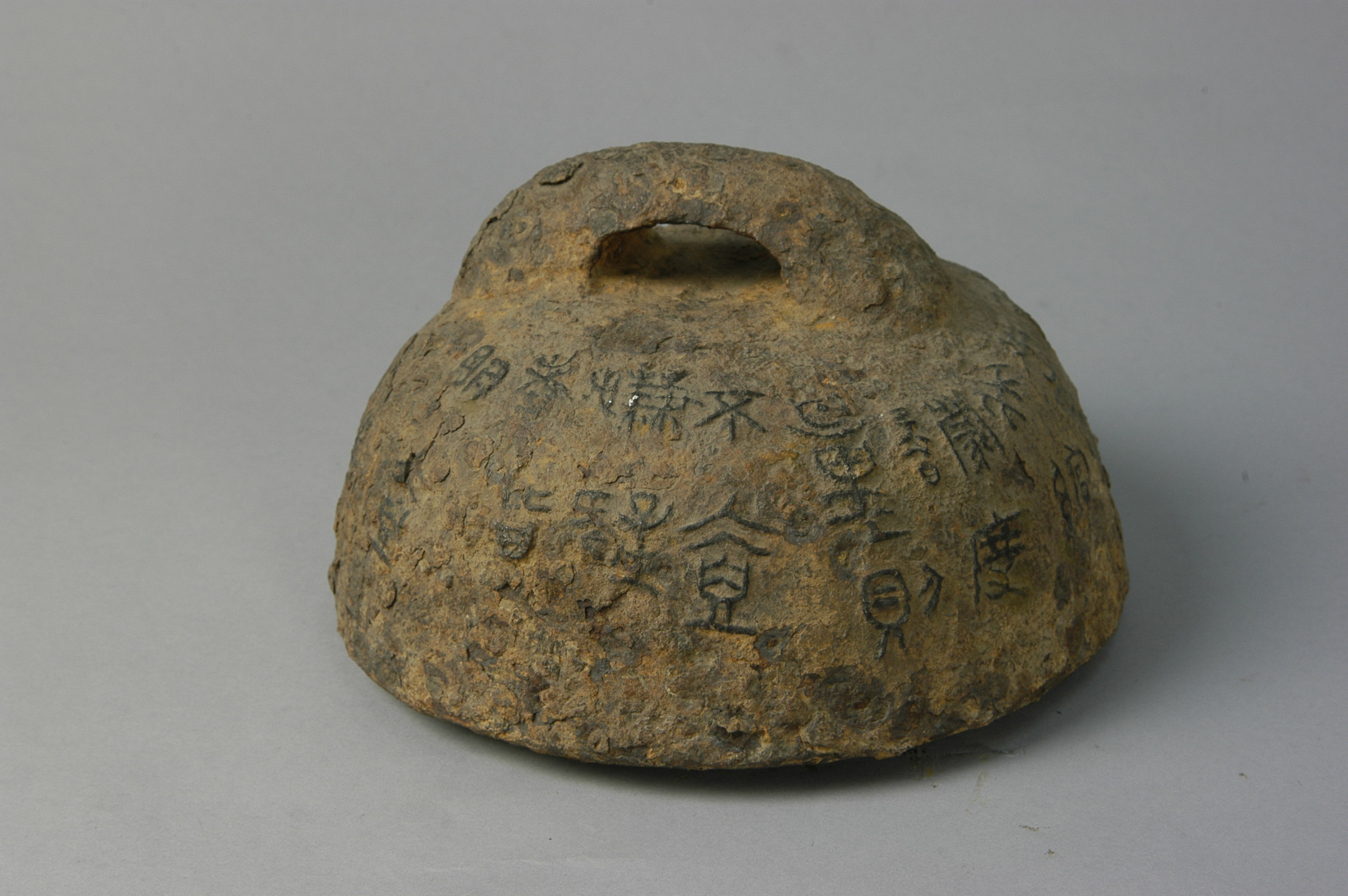Date: 221 BC, Qin Dynasty (221-206 BC)
Provenance: Unearthed in Baofeng county, Henan province, 1986
Measurements: Height: 15.8 cm, Diameter: 25 cm
This iron weight served as a measuring device in ancient China's measuring system known as heng, It weighs approximately 30 kilograms, equivalent to one shi (literally, "stone"), the basic unit of weight in the Qin measuring system. Crafted from cast iron, this solid artifact has a hemispherical shape with a flat bottom and an arched bridge knob on top.
The surface of the weight is inscribed with embossed seal script characters, arranged in 20 lines of 40 characters from right to left. The inscription reads: "In the 26th year of the Emperor's reign, he unified the various feudal states, bringing peace and prosperity to the people. He proclaimed himself emperor and, through an edict, tasked prime ministers Wei Zhuang and Wang Wan with legislating standardized weights and measures, harmonizing the previously chaotic systems."
The Emperor was Qinshihuang (r. 221-210 BC), or Ying Zheng (259-210 BC), who began his rule of the State of Qin in 247 BC. The 26th year of his reign (221 BC) marked the first year after his annexation of the other six states, namely Han, Zhao, Yan, Wei, Chu, and Qi, and his establishment of a centralized autocracy and implementation of measures to consolidate power, with standardized length (du), capacity (liang) and weight (heng) being a crucial step. This iron weight, excavated from the ancient city ruins dating back to the Spring and Autumn period (770-476 BC), bears clear evidence of its era, providing valuable insight into studies on territorial delineation during Emperor Qinshihuang's unification.
The 40-character inscription on the iron weight perfectly aligns with the content of Emperor Qinshihuang's edict, serving as an exemplary artifact for the study of seal engraving and the evolution of calligraphy. This well-preserved artifact, free of traces of weight adjustments, serves as empirical evidence for the study of metallurgical techniques in the Qin Dynasty.

